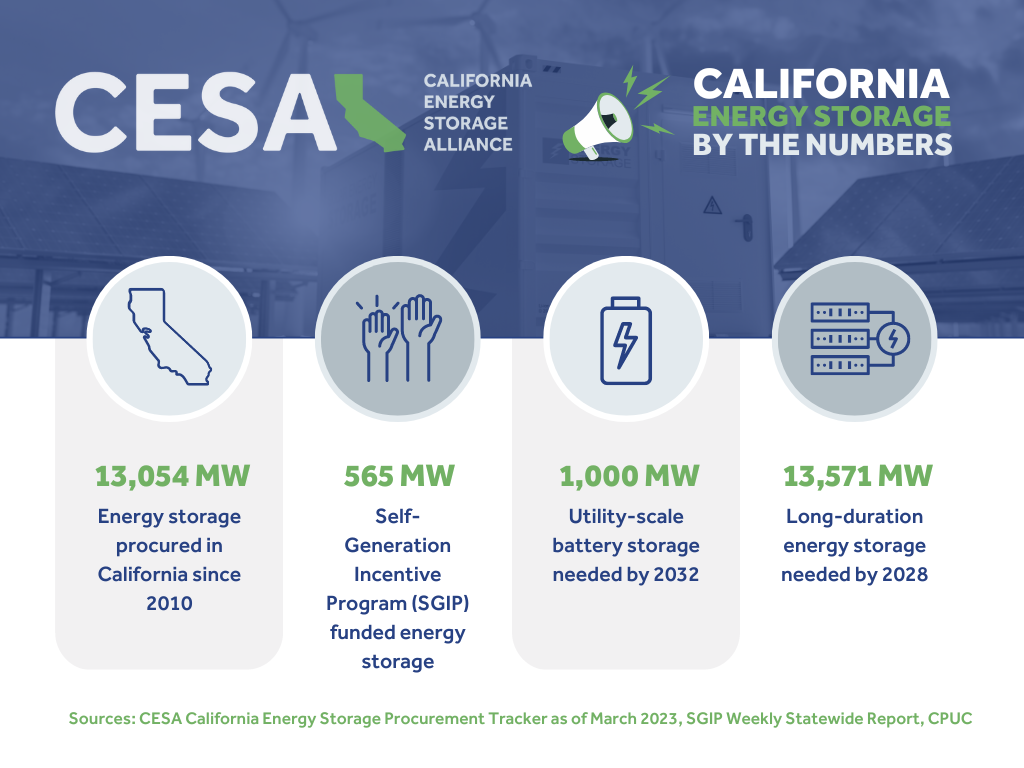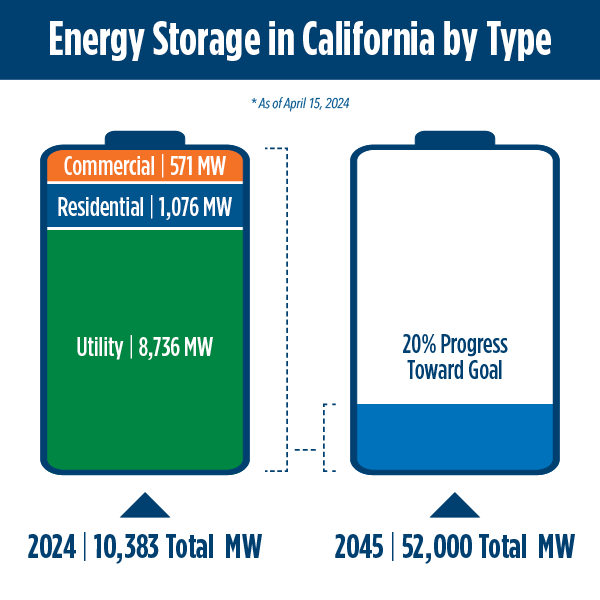Energy Storage Provides Invaluable Benefits!
GHG Emissions
Reduction
Energy storage reduces greenhouse gases (GHGs) by reducing the need for inefficient gas-fired peaker plants.
Renewable Energy Integration
Energy storage solves the intermittency challenges of renewable energy and reduces curtailment of solar energy during periods of high production.
Increased Grid Resiliency & Energy Diversity
Energy storage improves grid reliability by providing multiple essential functions including preventing blackouts and providing back-up power when blackouts do occur.
Cost Savings
End-customers can save money on their electric bills by using energy storage to avoid using energy when energy costs are the highest.
Customer Choice
California supports the customer’s right to choose how their energy is provided.
Grid Benefits
Energy storage solutions can behave like traditional power plants and ‘turn on’ to provide energy to the grid (during periods of peak usage and high ramping).



